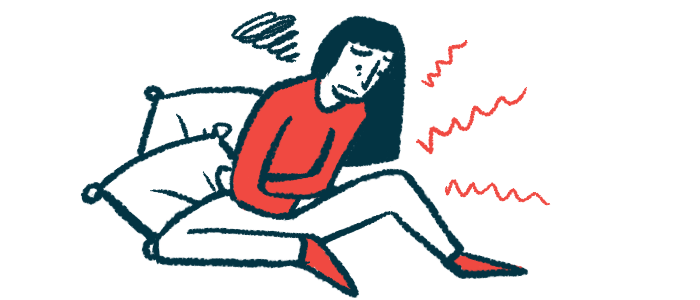Chronic symptoms, poor life quality found for AHP patients in Brazil
New registry study cites porphyria attacks as public health problem
Written by |

People in Brazil with acute hepatic porphyria (AHP) have a high prevalence of chronic symptoms and a poor quality of life, a retrospective registry study has found.
This new work also reported a higher proportion of patients with recurrent attacks compared with previous studies.
“Our study fortifies the knowledge that patients with AHP with recurrent attacks had a poor quality of life and great disability representing an important public health problem that can be [changed] with actions for disease awareness and medical education,” the researchers wrote, also calling for the use of “new innovative genetic therapies.”
The study, “Brazilian registry of patients with porphyria: REBRAPPO study,” was published in the Orphanet Journal of Rare Diseases.
Chronic symptoms between attacks reported by more than 70% of patients
AHP, a type of porphyria, is caused by an enzyme deficiency in the process that controls the production of heme, a molecule that enables red blood cells to transport oxygen.
When heme production is disrupted, there is an accumulation of porphyrins and other precursor molecules in different organs. In AHP, there is a buildup of toxic porphyrins in the liver.
Researchers in Brazil created a national registry, called REBRAPPO, with retrospective clinical data of a large group of patients in the country with porphyria. The registry aimed to provide insights into the diagnosis, clinical profile, and quality of life of people with porphyria by retrospectively collecting self-reported medical data through a specific electronic form.
The study included 172 patients with porphyria, who were mainly female (85.4%), and Caucasian (55.8%). Patients had a mean age of 20.5 at the time they experienced their first symptoms, and a mean age of 30.2 by the time they were diagnosed.
Most patients had been diagnosed with AHP (86%), while four (2.3%) had erythropoietic porphyria (EP), and 20 (11.6%) were unaware of their disease subtype. Among those with AHP, the majority (79.7%) had acute intermittent porphyria, 10.8% had variegate porphyria, 6% had hereditary coproporphyria, and 1.35% had ALAD porphyria. Most of these patients (67.5%) had the diagnosis confirmed by a genetic test.
To reach a final diagnosis, AHP patients required a mean of 62.04 medical consultations, with 44.5% consulting more than five specialists until they were finally diagnosed. Symptoms started before the age of 18 for 41.2% of these patients, but a diagnosis was made for only 7.4% of them before reaching adulthood.
The first AHP-related symptom was abdominal pain for 52% of the patients, followed by acute muscle weakness (15.5%), and acute encephalopathy, a form of brain disease (10.8%).
More Brazilian patients reported chronic symptoms … than EXPLORE patients (65%) with some [interesting] differences like arm or leg pain as the major cause of pain in Brazilian patients in contrast to abdominal pain in EXPLORE [group].
Researchers observed a strong correlation between the number of porphyria attacks occurring in the last year and the number of attacks during the course of the disease.
Overall, AHP patients had a mean of 6.2 attacks during the course of the disease, with 49.3% of them reporting only one attack and 35.8% having four or more attacks. In the last year, 47.2% of the patients had no attacks, 20.2% had one attack, and 24% had four or more.
Also, a significant proportion of patients (70.9%) reported having chronic symptoms between attacks.
Frequent chronic and attack symptoms included abdominal and muscle pain; mood and sleep complaints, such as fatigue, anxiety, and insomnia; gastrointestinal symptoms like nausea, constipation, and loss of appetite; and other problems such as palpitations, weakness, and skin rashes.
“More Brazilian patients reported chronic symptoms … than EXPLORE patients (65%) with some [interesting] differences like arm or leg pain as the major cause of pain in Brazilian patients in contrast to abdominal pain in EXPLORE [group],” the researchers wrote.
Differences found with EXPLORE study data
EXPLORE (NCT02240784) was a multinational natural history study that previously explored the course and clinical management of AHP in patients with recurring attacks.
A large proportion (92.5%) of AHP patients reported being treated with glucose solution, a type of sugar, and 38.5% with hemin (sold as Panhematin and Normosang) during at least one attack. A small percentage of patients (3.3%) were preventively treated with hemin monthly.
Two patients were being treated with Givlaari (givosiran), and one patient underwent a liver transplant. Pain was managed with opioids during at least one attack in 73.6% of the patients, or daily in about a third (31.7%) of patients.
The quality of life of patients with AHP was evaluated using the SF-12 Health Survey Version 2 (SF-12v2). The mean physical score (39.49) and mental score (35.48) were lower than the reference value for an healthy population in the U.S. (50), indicating that AHP patients had a worse overall health-related quality of life.
The physical health score had an inverse moderate relation with the number of attacks occurring in the last year, meaning that a higher number of attacks were associated with a worse score. Moreover, patients with recurrent attacks had worse physical and mental health scores than those experiencing one or no attacks in the last year.
About one-third (34.4%) of the patients classified their general health as fair or poor, with 44.5% noting that pain interfered with their work.
“Our study adds new knowledge on the type and prevalence of chronic manifestations related to AHP and new data about the natural history and burden of disease,” the researchers wrote.
“Additionally, this national registry reinforces the current knowledge that AHP should be considered a chronic condition complicated by acute attacks with frequent and disabling progressive chronic symptoms present,” the team wrote, noting these symptoms were mostly “to neurological and psychiatric impairment.”







